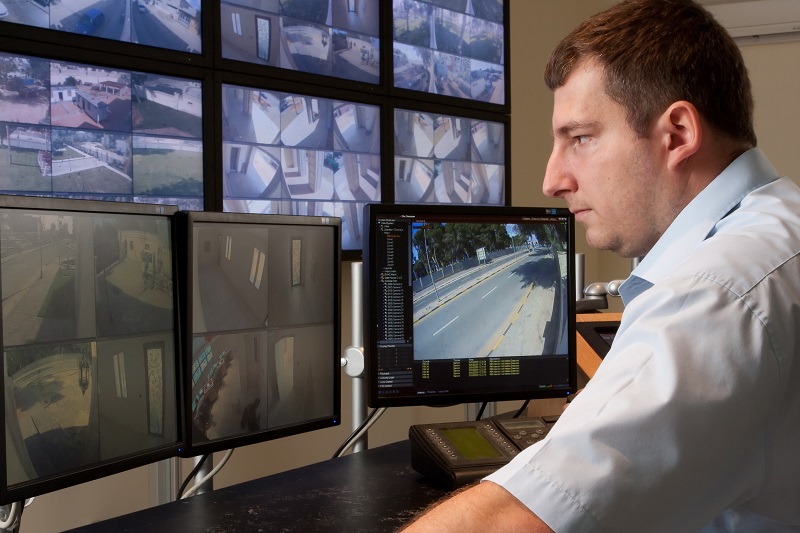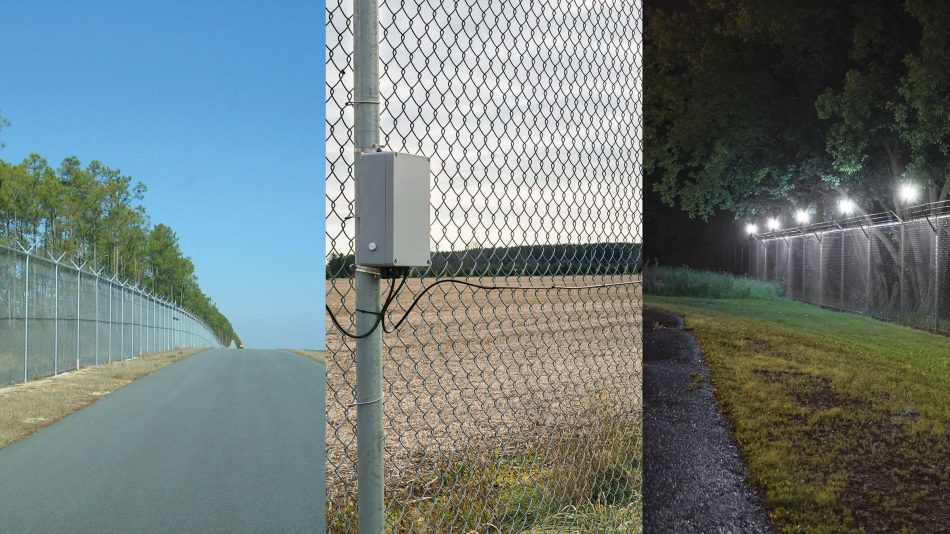How to Set Up a Fiber Optics Infrastructure for Security Installations in Commercial Spaces
How to Set Up a Fiber Optics Infrastructure for Security Installations in Commercial Spaces
Blog Article
The Ultimate Guide to Fiber Optic Safety And Security Equipments for Your Service
In an age where safety and security concerns are critical for organizations, understanding the details of fiber optic modern technology can be transformative. This guide outlines how integrating fiber optic protection systems not just enhances data defense however additionally uses benefits like resistance to interference and real-time tracking abilities.
Understanding Fiber Optic Modern Technology

The core of a fiber optic cord is composed of a thin glass or plastic center, bordered by a cladding layer that mirrors light back into the core. Single-mode fibers are created for long-distance transmission, while multi-mode fibers are ideal for shorter distances, commonly made use of within buildings.
Fiber optics are not just much faster however additionally extra protected than standard circuitry. Their inherent resistance to electromagnetic interference and the problem of using the signal without detection make them a preferred option for services focusing on information integrity and safety and security. As organizations progressively count on safe and secure and efficient communication systems, understanding fiber optic technology ends up being necessary for educated decision-making.
Secret Advantages of Fiber Optic Safety And Security
When considering safety choices for a service, the benefits of fiber optic systems are specifically engaging. Fiber optic innovation provides extraordinary data transmission speeds and data transfer capability, making it optimal for dealing with high-resolution video feeds from surveillance electronic cameras. This ability guarantees that safety and security personnel obtain real-time information, enhancing total action times to prospective security hazards.
Additionally, fiber optic cable televisions are inherently immune to electromagnetic disturbance, which can jeopardize the integrity of typical copper-based systems. This resistance makes sure that the data sent stays secure and continuous, providing a much more dependable security facilities. Additionally, optical fiber are less prone to physical damage, as they are made from glass instead than metal, minimizing maintenance expenses and downtime.
Another considerable advantage is the enhanced scalability of fiber optic systems. As organization requirements advance, fiber networks can be easily increased to accommodate extra protection devices without substantial overhauls to the existing infrastructure. Lastly, fiber optic systems supply enhanced cybersecurity functions, consisting of encryption abilities that shield sensitive data from unapproved access. Collectively, these advantages make fiber optic protection systems a durable choice for companies looking for to boost their security measures.
Installation Process and Considerations
Considering the complexities involved, the installation process of fiber optic security systems requires mindful preparation and implementation. The first action includes a detailed site assessment to identify optimal areas for cabling and tools. This analysis must think about environmental elements, existing infrastructure, and possible susceptabilities.

Furthermore, the setup should follow local building ordinance and market requirements. This may consist of collaborating with various stakeholders such as building supervisors, IT teams, and safety and security personnel to make certain smooth integration with existing website here systems.
Post-installation, rigorous screening is required to verify system efficiency and determine any concerns that may arise. By prioritizing these factors to consider during the installment procedure, businesses can make certain a robust and effective fiber optic protection system that satisfies their specific safety needs.
Most Recent Advancements in Fiber Optic Protection
Recent innovations in fiber optic innovation have substantially enhanced the abilities of security systems for services. One of one of the most notable advancements is the assimilation of fiber optic sensors that can identify vibrations and breaches along the perimeter of a facility. These sensing units provide real-time tracking, making it possible for fast feedback to potential breaches.
In addition, the development of distributed fiber optic noticing modern technology allows for the constant surveillance of large areas with a solitary fiber wire. This method not only lowers installation costs however additionally boosts the check over here reliability of keeping an eye on systems by removing the need for multiple, separate sensing units.
In addition, advancements in multiplexing techniques have allowed organizations to send vast amounts of data over fiber optic networks, improving the abilities of video clip security systems. High-definition video feeds can now be sent over long distances without loss of click over here now quality, guaranteeing that safety workers have accessibility to clear and workable info.
Finally, the usage of man-made knowledge (AI) along with fiber optic systems is changing hazard discovery. AI formulas can examine data from fiber optic networks to determine uncommon patterns or habits, allowing for proactive safety and security measures. These innovations collectively represent a substantial jump ahead in fiber optic safety innovation.
Selecting the Right System for Your Company
Selecting the appropriate fiber optic security system for your organization is critical for making sure ideal protection and assurance. To make an enlightened option, assess your details protection requirements, considering variables such as the dimension of your premises, the nature of your procedures, and prospective susceptabilities.
Begin by examining the level of safety and security required; for instance, high-risk settings may require sophisticated systems with incorporated monitoring and intrusion discovery capacities. Next off, take into consideration scalability; as your company expands, your safety system should be qualified of expanding to suit enhanced needs without significant overhauls.
In addition, investigate the reliability and performance of different systems. Try to find providers with recognized track records and consumer endorsements that vouch for their service quality. It's also recommended to ask about the innovation's compatibility with existing facilities, making sure a smooth assimilation procedure.
Final Thought
To conclude, fiber optic protection systems offer a durable option for improving service safety facilities. The combination of high-speed data transmission, resistance to electromagnetic interference, and progressed surveillance capacities substantially boosts overall protection (fiber optic security system). By recognizing the modern technology, acknowledging its benefits, and considering the installation procedure, organizations can make informed choices. The current advancements additionally reinforce the effectiveness of these systems, making certain that services stay secure and versatile in an ever-evolving danger landscape.
Report this page